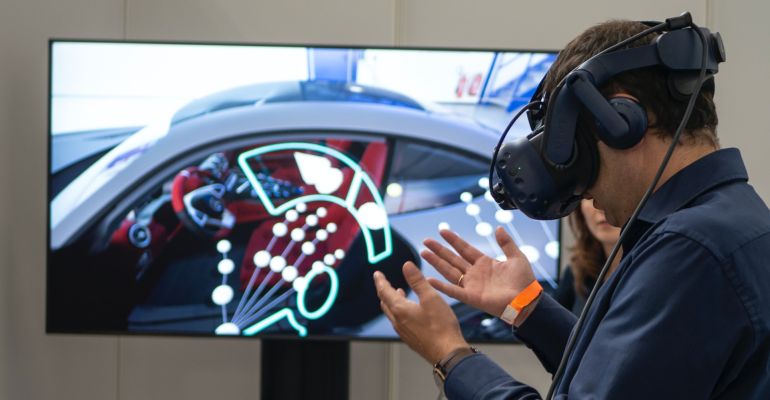Augmented Reality vs. Virtual Reality: Applications and Differences
The realms of Augmented Reality (AR) and Virtual Reality (VR) have taken the world by storm, offering innovative experiences that blend the physical and digital worlds. While both technologies have the power to transform how we interact with the environment, they serve different purposes. In this blog, we’ll explore the distinctions between Augmented Reality and Virtual Reality, their applications, and the impact they have on various industries.
Understanding Augmented Reality and Virtual Reality
Augmented Reality (AR)
Augmented Reality overlays digital content on the physical world, enriching the user’s real-world experience. AR applications typically involve smartphones, tablets, smart glasses, or heads-up displays. Users can see and interact with both the real world and computer-generated elements simultaneously.
Virtual Reality (VR)
Virtual Reality, on the other hand, immerses users in a fully simulated digital environment. VR applications often require specialized headsets or goggles that block out the physical world entirely, replacing it with a computer-generated, immersive environment.
Applications of Augmented Reality
- Gaming: AR gaming apps like Pokémon GO have brought AR to the mainstream. Players use their smartphones to explore the real world while encountering and capturing virtual creatures.
- Navigation: AR navigation apps, such as Google Maps with AR, provide real-time directions overlaid on the camera view, making it easier for users to find their way.
- Education: AR enhances learning experiences by overlaying information and 3D models on textbooks or educational materials, making learning more engaging.
- Retail: AR is transforming the retail industry with virtual try-ons and product visualization, allowing customers to see how products will look in their homes before purchasing.
- Healthcare: AR is used for medical training, surgery planning, and visualizing patient data in real time during procedures.
Applications of Virtual Reality
- Gaming: VR gaming offers a fully immersive experience, where players become part of the virtual world. Games like Beat Saber and Half-Life: Alyx have gained immense popularity.
- Training and Simulation: VR is used for training simulations in industries like aviation, healthcare, and the military, providing a safe environment for practicing skills.
- Architecture and Design: Architects and designers use VR to create and present 3D models and walkthroughs of buildings and interiors.
- Therapy and Rehabilitation: VR is employed in therapy for phobias, PTSD treatment, and physical rehabilitation by creating controlled and immersive environments.
- Entertainment: VR is a medium for immersive storytelling through experiences like virtual cinema, concerts, and art exhibitions.
Key Differences Between AR and VR
- Interaction with the Real World: AR enhances the real world by overlaying digital content, while VR immerses users in a completely digital environment.
- Immersiveness: VR offers a higher level of immersion, as users are cut off from the physical world, whereas AR maintains a connection to the real environment.
- Equipment: AR applications often run on smartphones or smart glasses, which are more accessible. VR requires specialized headsets, which can be bulkier and pricier.
- Use Cases: AR is suitable for applications where users need to interact with the real world and access additional information. VR excels in applications requiring full immersion and simulation.
- Examples: Pokémon GO is a well-known AR app, while VR examples include games like Beat Saber and training simulations like flight simulators.
Conclusion
Augmented Reality and Virtual Reality are two groundbreaking technologies that offer unique experiences and applications. While AR enriches the real world with digital elements, VR immerses users in entirely simulated environments. Both have transformative potential in gaming, education, healthcare, and many other industries. Understanding the differences between these technologies is essential for selecting the right tool to enhance experiences and solve problems in various domains. The future of AR and VR is bright, with continued advancements and innovative applications on the horizon. As both technologies evolve, we can expect even more remarkable experiences and real-world applications that bridge the gap between the physical and the digital.






